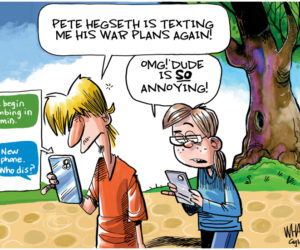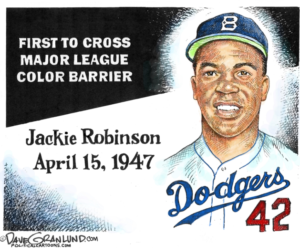I own Apple stock, but I’m not lining up at my local Apple store this weekend or waiting with bated breath for the UPS or FedX guy to show up at my door. Why not?
Shiny Is Not Enough
I don’t think I’ve ever bought a first generation Apple product. The novelty factor is insufficient motivation for me, and I don’t lust after “new” enough to bear the costs associated with a product that is barely out of the prototype stage. Some of those costs are real (ie, money), some of those costs are psychic (ie, frustration). Such is life with first gen products (software and hardware, but software these days is free when it’s dog food).
Balkanization
When (now) Sir Tim Berners-Lee invented the World Wide Web 20 years ago, he did so at least in part because of the lack of interoperability between hardware and software systems of the day. In 1996, he told Technology Review:
Anyone who slaps a ‘this page is best viewed with Browser X’ label on a Web page appears to be yearning for the bad old days, before the Web, when you had very little chance of reading a document written on another computer, another word processor, or another network.
The WWW and HTML/HTTP — along with the open source software movement (with generous doses of Apache) — helped topple those proprietary walled gardens. For computers.
With “smart” phones, however, the Balkanization battle was never fought. As a result, developers now create stand-alone applications to do a variety of things that are done by a browser on a computer. (We can talk about browsers, HTML and standards another day, but that lack of unity pales compared to this.) We don’t read the New York Times or the Wall Street Journal with a proprietary piece of software if we’re accessing that content on a computer, on the Web. But we are encouraged to do so on our iPhones and Blackberries because web interoperability never took hold in this space of highly varied hardware and software.
The iPad is more “computer” than “phone” — and yet Apple’s iPhone (and now iPad) application store is poised to become the primary way this new gadget interacts with web content. Balkanization, a process that increases development cost and complexity. I hope that I’m wrong.
Consumption Device
As I wrote in January, the iPad is a consumption device. I’m trying to reconcile my pragmatic understanding that most people “consume” (the 90-10 rule) with what feels like a device that coddles — that encourages consumption. The beauty and power of Web 2.0 technology is how easy we have made it to produce content. But this device seems dedicated to consuming content. I hope I’m wrong here, too.
Media Savior
It’s not, despite mainstream media fawning, hype and hope.
The current “news” business model — advertiser-driven due to the cost of accessing eyeballs and wallets — is broken. Disintermediated. Advertisers have alternative ways to reach those eyeballs and wallets, alternatives that began draining away revenue with the advent of television in the 1950s and escalated with direct mail. (We can talk, at a later date, about how Congressionally-mandated low rates contributed to this disruption.)
Moreover there are other forces at work. Major national account numbers are shrinking. For example, Macy’s cut its newspaper advertising in half between 2005 and 2008, in large part due to industry consolidation. (Macy’s parent, Federated Department Stores, bought one of its competitors for $11 billion.)
The WSJ’s irrational pricing plan for an iPad subscription demonstrates the depth of this desperation. It also reflects a focus on retaining monopolies through walled gardens. And walled gardens like these iPad applications impede information sharing — links from blogs, links on Twitter, links on Facebook walls — by disguising hyperlinks.
And news stories — or magazine articles — are not like songs. We don’t read them over and over and over again. Yes, we need to figure out a new business model. But those business models are extremely unlikely to come from incumbent organizations. That’s not how innovation works.
Do I think the iPad will be cool? Yep. Would I like to own one? Yep, if I can easily write and edit photos and such. I’m far less concerned about the lack of a video conferencing camera than I am about being able to easily create content. But for the time being, I’ll do without, a philosophical stand against consumerism with a dose of concern about consequences.
:: visit wiredpen to leave comments
:: Follow me on Twitter!
Known for gnawing at complex questions like a terrier with a bone. Digital evangelist, writer, teacher. Transplanted Southerner; teach newbies to ride motorcycles. @kegill (Twitter and Mastodon.social); wiredpen.com
















